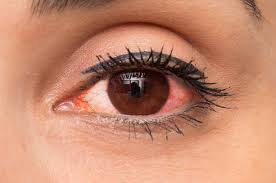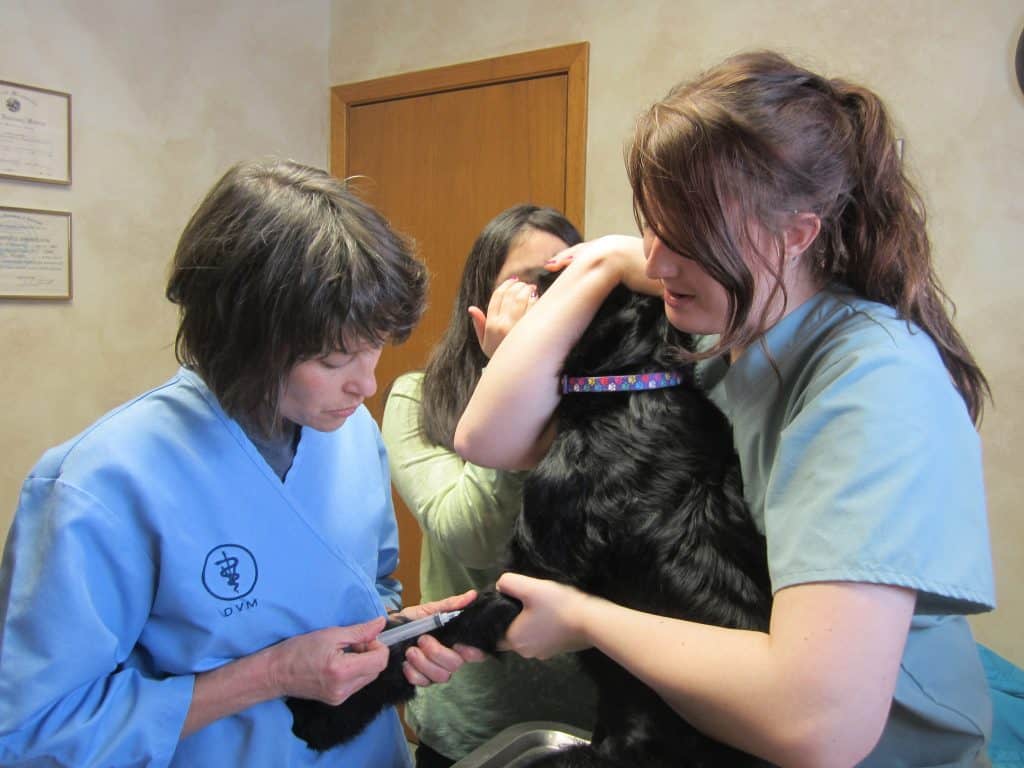What You Need to Know About Eye Pain
Eye pain is common, but it’s rarely a symptom of a serious condition. Most often, the pain resolves without medicine or treatment. Eye pain is also known as ophthalmalgia.
Depending on where you experience the discomfort, eye pain can fall into one of two categories: Ocular pain occurs on the eye’s surface, and orbital pain occurs within the eye.
Eye pain that occurs on the surface may be a scratching, burning, or itching sensation. Surface pain is usually caused by irritation from a foreign object, infection, or trauma. Often, this type of eye pain is easily treated with eye drops or rest.
Eye pain that occurs deeper within the eye may feel aching, gritty, stabbing, or throbbing. This kind of eye pain may require more in-depth treatment.
Eye pain accompanied by vision loss may be a symptom of an emergency medical issue. Call your ophthalmologist immediately if you begin to lose your vision while experiencing eye pain.
What causes ocular pain?
The following may cause eye pain that originates on the surface of the eye:
Foreign object
The most common cause of eye pain is simply having something in your eye. Whether it’s an eyelash, a piece of dirt, or makeup, having a foreign object in the eye can cause irritation, redness, watery eyes, and pain.
Conjunctivitis
The conjunctiva is the tissue that lines the front of the eye and the underside of the eyelid. It can become infected and inflamed. Often, this is caused by an allergy or infection.
Though the pain is usually mild, the inflammation causes itchiness, redness, and discharge in the eye. Conjunctivitis is also called pink eye.
Contact lens irritation
People who wear contact lenses overnight or don’t disinfect their lenses properly are more susceptible to eye pain caused by irritation or infection.
Corneal abrasion
The cornea, the clear surface that covers the eye, is susceptible to injuries. When you have a corneal abrasion, you will feel as if you have something in your eye.
However, treatments that typically remove irritants from an eye, such as flushing with water, won’t ease the pain and discomfort if you have a corneal abrasion.
Injury
Chemical burns and flash burns to the eye can cause significant pain. These burns are often the result of exposure to irritants such as bleach or to intense light sources, such as the sun, tanning booths, or the materials used in arc welding.
Blepharitis
Blepharitis occurs when oil glands on the eyelid’s edge become infected or inflamed. This can cause pain.
Sty
A blepharitis infection can create a nodule or raised bump on the eyelid. This is called a sty or a chalazion. A sty can be very painful, and the area around the sty is usually very tender and sensitive to touch. A chalazion isn’t usually painful.

Cataracts
Cataracts happen to be another of the most widely existing eye problems. The formation of cloudy areas in the eye lens is referred as the cataracts. Light passes through a clear eye lens to your retina (just like a camera), where images are processed. With cataracts affecting your eye lens, light cannot pass through to the retina smoothly enough.
As a result, you are unable to see as clearly as people without cataracts and may also notice a halo or glare around lights at night.
Signs and Symptoms of Cataracts
Most of the times, the formation of cataracts is a slow process, lacking typical symptoms like pain, tearing or redness of eyes. Some other symptoms include:
- Blurred, clouded or dim vision
- Problem seeing at night
- Problem seeing through light and glare
- Seeing ‘halos’ around lights
- Frequently changing contact lens prescription or eyeglasses
- Faded view of colors
Treatment Options
Through early stages of cataracts, new eyeglasses, antiglare sunglasses, magnifying lenses and brighter lighting can help. If not, surgery turns out to be the only effective treatment, which involves removal and replacement of cloudy lens with an artificial one.

Dry eyes
Diagnosis
Tests and procedures that may be used to determine the cause of your dry eyes include:
A comprehensive eye exam. An eye exam that includes a complete history of your overall health and your eye health can help your doctor diagnose the cause of your dry eyes.
A test to measure the volume of your tears. Your doctor may measure your tear production using the Schirmer test. In this test, blotting strips of paper are placed under your lower eyelids. After five minutes your doctor measures the amount of strip soaked by your tears.
Another option for measuring tear volume is the phenol red thread test. In this test, a thread filled with pH-sensitive dye (tears change the dye color) is placed over the lower eyelid, wetted with tears for 15 seconds and then measured for tear volume.
A test to determine the quality of your tears. Other tests use special dyes in eyedrops to determine the surface condition of your eyes. Your doctor looks for staining patterns on the corneas and measures how long it takes before your tears evaporate.
A tear osmolarity test. This type of test measures the composition of particles and water in your tears. With dry eye disease, there will be less water in your eyes.
Tear samples to look for markers of dry eye disease, including elevated matrix metalloproteinase-9 or decreased lactoferrin.
Medications
Prescription medications used to treat dry eyes include:
- Drugs to reduce eyelid inflammation. Inflammation along the edge of your eyelids can keep oil glands from secreting oil into your tears. Your doctor may recommend antibiotics to reduce inflammation. Antibiotics for dry eyes are usually taken by mouth, though some are used as eyedrops or ointments.
- Eyedrops to control cornea inflammation. Inflammation on the surface of your eyes (cornea) may be controlled with prescription eyedrops that contain the immune-suppressing medication cyclosporine (Restasis) or corticosteroids. Corticosteroids are not ideal for long-term use due to possible side effects.
- Eye inserts that work like artificial tears. If you have moderate to severe dry eye symptoms and artificial tears don’t help, another option may be a tiny eye insert that looks like a clear grain of rice. Once a day, you place the hydroxypropyl cellulose (Lacrisert) insert between your lower eyelid and your eyeball. The insert dissolves slowly, releasing a substance that’s used in eyedrops to lubricate your eye.
- Tear-stimulating drugs. Drugs called cholinergics (pilocarpine, cevimeline) help increase tear production. These drugs are available as pills, gel or eyedrops. Possible side effects include sweating.
- Eyedrops made from your own blood. These are called autologous blood serum drops. They may be an option if you have severe dry eye symptoms that don’t respond to any other treatment. To make these eyedrops, a sample of your blood is processed to remove the red blood cells and then mixed with a salt solution.

You Can Treat Some Eye Problems at Home
Many eye problems need an ophthalmologist’s medical knowledge. They have years of clinical and surgical training. But there are eye problems that you can treat safely at home, as long as they are simple. Here are a few problems that can respond to home treatment, with tried and true remedies.
Black eye
You can usually treat a black eye at home. But if there are more serious symptoms of black eye, see an ophthalmologist. These signs include:
- blurred vision;
- blood in the eye; or
- an inability to move the eye.
To reduce swelling and ease pain the first day, apply an ice pack to the eye for 15 to 20 minutes at a time, once every hour. If you don’t have an ice pack, use a bag of frozen vegetables or ice cubes wrapped in cloth. The cloth protects your skin from freezing. Don’t put a raw steak or other raw meat on your eye. Despite what you’ve seen on television and in the movies, there’s no scientific basis for this. In fact, the bacteria in raw meat poses a high risk of infection.
Pink eye (also known as conjunctivitis)
A virus causes most cases of pink eye. These cases don’t respond to antibiotics. Viral conjunctivitis will disappear on its own. Have your ophthalmologist diagnose your particular case. Reduce the discomfort of conjunctivitis by applying cool compresses to the eye.
If your conjunctivitis is bacterial, follow your treatment plan. This usually involves antibiotic eye drops. In either case, you should take steps to reduce the chance of passing the problem on to someone else. Conjunctivitis is highly contagious. Follow these tips to prevent the spread:
- Don’t share towels, handkerchiefs or cosmetics.
- Change pillowcases frequently.
- Wash your hands often.
Eye allergy and seasonal allergy
Just as you can get nasal allergies, you can get eye allergies that leave your eye red, itchy and teary. Limiting your exposure to the source of your allergy — whether it’s pollen, pets or mold — can help relieve symptoms. If you can’t remove the source entirely, there are ways to reduce its effect with eye allergy treatments.
If pollen bothers you:
- Don’t use a window fan, which can draw pollen into your house.
- Wear sunglasses when you go outside.
If dust is the problem:
- Use allergen-reducing covers for your bed.
- Use artificial tears, which temporarily wash allergens from your eyes.
- Use over-the-counter anti-allergy eye drops to lessen the symptoms.
Eye Injury Treatment
An object such as a piece of glass or metal is sticking out of the eye.
1. For Chemical Exposure
- Don’t rub eyes.
- Immediately wash out the eye with lots of water. Use whatever is closest — water fountain, shower, garden hose.
- Get medical help while you are doing this, or after 15 to 20 minutes of continuous flushing
- Don’t bandage the eye.
2. For a Blow to the Eye
- Apply a cold compress, but don’t put pressure on the eye.
- Take over-the-counter acetaminophen (Tylenol) or ibuprofen (Advil, Motrin) for pain.
- If there is bruising, bleeding, change in vision, or it hurts when your eye moves, see a doctor right away.
3. For a Foreign Particle in Eye
- Don’t rub the eye.
- Pull the upper lid down and blink repeatedly.
- If particle is still there, rinse with eyewash.
- If rinsing doesn’t help, close eye, bandage it lightly, and see a doctor.








